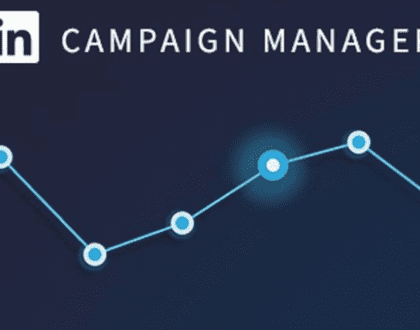Making sure the price is right
by EnyOsung
All businesses have to set prices. Whether you sell clothing food, luxury cars, business services, or charitable services establishing the right price for your business is a thorny issue. The price challenge arises out of the need to sell as much as possible in order to make maximum profits without pricing potential customers out by being so expensive that no one wants to buy from you.
I frequently come across small business and start-up clients who seem happy to continue making the same mistakes with pricing over and over again. Here we look at how to make sure your price is right by examining four myths about pricing and reasons you should not believe them. I also suggest factors to focus on to remove barriers to selling as well as things to get right tot make people buy from online businesses.
Importance of price
Without a doubt, price matters! Price is often one of the first things prospects look at when researching products and services. Moreover, e-commerce businesses are also competing for trust and increasingly for consumers’ attention. Given the fact that people’s attention spans have gone down from 12 seconds in 2000 to 8 seconds in 2013 (a massive 33% decline), businesses have to do an awesome job of giving people clear value as soon as people see your business”.
To be successful, small businesses must learn the pricing techniques that help to sell more. Here we examine some of the common misconceptions about pricing strategies to make sure the price is right for your business and customers.
Myth #1: Everything has an agreed value
Many businesses wrongly set prices based on what they think their product is worth. This is often coupled with a belief that customers will be unwilling to pay any more than this inherent price because they agree on the fixed value.
Let’s use my love for designer label polo shirts to work out the reality. You see, I am a self-confessed sucker for Moschino, Armani, Versace, Burberry or any other famous fashion house polo shirts and will happily pay upwards of £100 for a black one in my size (I see prefer to keep how big I am to myself). It’s the ease of wearing them and the fact that they go with virtually any outfit that I love
What are these polo shirts actually worth?
The logic above says the real price that customers should be willing to pay should be a combination of how much it cost to make, buy and deliver something as well as a small margin on top to make it worthwhile for the retailer. In truth, pricing is rarely this scientific and mathematical. In reality, we all know that it probably cost no more than £5 to manufacture these polo shirts. Yet people like me readily pay the money to own one.
The media and fashion houses have really done a number of subtle cues on people like me over the years to get us to value the designer’s label to the point of irrational behaviour (clever marketing, celebrity endorsements and brand reputation are just some of the ways). There is no notion of ‘real’ price when it comes to making the purchase! The polo shirt is basically worth my perceived value – what I believe it is worth, and therefore, willing to pay for it!
The fact is how much consumers are willing to pay is affected by what goes on in their head. Behavioural Decision scientists, Behavioural Economists and Price Psychologists have studied how prices work to influence people’s actions for many years. Consumers make decisions to buy or not to buy based on cues. Furthermore, people don’t really know how much something should cost because nothing has a fixed monetary value. Consequently, the same price may be seen as a bargain or over-the-top, depending on the context.
The time has come for small businesses to start using the available knowledge to their advantage so they can maximise sales and profitability.
Myth #2: Choose a price strategy and stick rigidly to it.
Most businesses choose a pricing structure that is anywhere between these two extremes:
- Low price – compete based on charging lower prices than the completion. This can position your business to get lots of sales with but at lower prices. You risk going out of business if your revenue does not match your expenditure.
- High price – position your charges at the top end of the market. This may give off an aura of luxury, prestige, and exclusivity thereby attracting a more well-off clientele. While these customers are fewer in number, they make up for volume by purchasing your products at the higher price.
Ideally, you want to develop a high level of price discipline – where you set a price strategy and adhere to it over time. This helps customers to trust in the value your business provides and the prices you charge.
As Shopify tells us, “pricing is both an art and a science that requires an experimental attitude coupled with an intuitive feel” for how you want your brand and by extension, your products/services to be perceived.
Businesses require flexibility in how they implement their overall approach to achieving profitability. It often makes sense to have a mixed pricing approach that combines charging higher prices for lower volume sold and lower prices for higher volumes sold. Whichever price strategy you choose for your business, when you have a range of products or services, you can sometimes lower prices for some things as long as you also sell others that are marked up higher.
Myth #3: You must have high markups to make profits

Markups vs margins (image source: Celopharma)
I strongly believe that every business must absolutely focus on making profits, otherwise you risk going out of business. The question is how you set about making that profit.
Price markup is the most widely used technique to make profits. As Celopharma explains that “many people use the terms margins and markup interchangeably. However, they mean different things and it is important to use them correctly”.
Although both are expressed as a percentage, you can see the difference in the image above:
- Markup = Profit / Cost; while
- Margin = Profit / Total Revenue = Profit / Cost + Profit”.
Your price margin is the portion of a product’s selling price that is your profit on that product, whereas your markup is how much you add to the cost of a product to get your selling price (Tim Plaehn).
I come across clients who add £X + 70% markup to products, and they look surprised that no one is buying from them. I believe unjustifiably high markup is really greedy, especially when their suppliers are selling the same products on their e-commerce sites and other retailers are selling the exact same products for much less.
If you are a well-known high-value brand like Harrods, you may be able to get people to pay high markup prices. If not, you are going to sell more if you keep your price in line with your competitors. If you are just starting out, you may benefit from going even lower in order to build traction in your customer market.
What are the right markup and margins for your products/services?
Potential customers can see what competitors are offering and charging using a range of devices. They can get advice, feedback and recommendations from social networks and friends within seconds. Furthermore, the nature of the Web means that businesses are desperate to be seen to give good value for money. Answering questions such as these will help to work out the right markup for your business:
- What are competitors’’ markups and profit margins?
- How would customer react if you hiked up your prices overnight?
- What markup do you need to achieve your target profit margin?
A one-size-fits-all markup strategy does not exist because the correct answers to these questions are unique to each business. Negotiating the best deal with suppliers, together with having exclusivity agreements wherever possible with suppliers should be the foundation to get maximum margins and profits.
Myth #4: Discounts don’t work
You would think offering price discounts is some sort of disease to be avoided at all costs if you read much the posts online. The problems associated with giving discounts are certainly well documented including these:
- Discounting can reduce the perceived value of your products/ services by up to 12 percent.
- Customers may decide to only pay the discount prices and refuse to buy at full price.
- The beneficial effects of discounts are usually only short term.
I believe that the positive effects of using discounts strategically far outweigh the negative consequence.
Take a moment to think about how you feel when you see products on discount sales at your local supermarket? Can you resist the temptation to buy your favourite bottle of wine when it is half price or less?
Undoubtedly, consumers love discounts because they get more value for money. The fact that 66 million people redeemed discount vouchers proves this. Another truth is thousands of businesses give discounts because they get people to buy more. Research showing that Cornflakes increased sales by 500% on a day of discounting while a detergent brand increased sales by 450% show that discounts work.
Further evidence of the power of discounts comes from Valve, the games maker after they ran a discount campaign on one of their console games. As you can see in the graphic below, sales rose dramatically, leading to a reported 584 percent increase in revenue.
The real issue is the basis of your judgement of ‘effective’ in discounting’. Businesses should not run discounts every day otherwise customers will think you are forever closing down. Worse still, people may get wise to your strategy and start doubting the value of your discounts.
Identifying the goals for your discount campaign, then designing your campaign properly to achieve them will help to ensure your business gets maximum benefits.
Moving forward
Price is a really important factor is people deciding to buy anything. The realities of e-commerce do not necessarily mean that you have to charge the lowest prices or lose out. However, the Web has led to much greater competition that in turn increases the duty on online businesses to convince consumers to buy from them instead of a competitor.
The key to selling more is now providing great value to customers (more bang for their buck, so to speak), so that they will be wowed by their experience with your business and keep coming back for more.
When consumers do not buy from you, the price is just one of the potential reasons that you can do something about. The following graphic shows some of the other key issues that may be hurting your sales:

Reasons people buy / don’t buy online (image source: Slant)
The graphic shows that the having to pay an additional shipping/delivery charge is the top barrier to people buying. More than half of consumers are typically not ready to buy when on a website is the second biggest reason that visitors do not convert on their first visit. Slow loading websites and laborious payment processes also rank highly among the things that put people off, as does the absence of safety/trust features like secure payment padlock and refund policy.
In contrast, consumers are most motivated to buy based on getting positive reviews from networks (their own network of friends and family or social networks in general) and loyalty programs that reward becoming a repeat customer.
I am sceptical about the finding that visitors via social networks have such a high propensity to buy because this is rarely the experience of many, let alone most online businesses. However, the figures may be believable if they reflect the relatively low numbers of click-through’s from social networks who subsequently buy.
The key learning here is that businesses need to decide their price strategy and keep to it over a period of time. However, they should not become obsessed with pricing so much so that they neglect the other key factors that influence people to buy, some of which are covered above.
Conclusion
Businesses must use all available means to get people’s attention and turn prospects into buyers. Factors like website design, usability, trust and policies must all be considered in the mix that businesses have to get right. Ultimately, a price has incredible power to motivate customer purchase behaviour. Successful e-commerce demands that businesses understand the ways price works to motivate buyer behaviour in order to separate the facts from the myths.
It is an inescapable fact that a lot of how price works is dependent on what goes on in the consumers’ head – psychology. So in addition to the numbers, businesses can implement several strategies to give consumers cues that can and do motivate them to buy.
In addition to understanding what motivates customer behaviour, it’s vital to understand how to use pricing to our advantage because “The fact is that there are people out there who make mentally-influenced decisions rather than completely rational decisions, because thoughts are partially made in an emotional sense” (Psychological Pricing).
Free Download Guide
Download our free Psychological Pricing Strategies Guide to learn about proven techniques to get more people to buy from you. The guide shows you 9 powerful pricing strategies that you can implement today to get more people to buy from your business. It also guides you through how to actually implement each strategy and the pitfalls to avoid.
Your customers are not too clever to be influenced by simple (and sometimes obvious) price strategies, far from it! Used properly, psychological price strategies give consumers genuine reasons to choose your business instead of going to a competitor.
The payoff when you implement the right strategies is enormous and it is not difficult, but it does require some work.
Other posts you may like
Delightful remarketing & How to do it
How to actually stop dangers to customers’ information
Why local marketing works for small service businesses
–
Our Digital Marketing Services:
Search Engine Optimisation| Content Development & Marketing| Email Marketing| Pay-Per- Click| Social Media Marketing| App Development & Marketing
HOME | ABOUT | BLOG | TESTIMONIALS
**************************************************************************************************************************************************************************************
smallbiz-emarketing provides expert market research, marketing on all digital platforms and offline advertising consultancy specifically for small businesses and start-ups for whom money is tight. Checkout our Services page to see how our digital marketing services can help your business to get more customers and sell more, faster. Also checkout our Prices page to see our genuinely affordable digital marketing packages for small businesses and startups. Why not sign up for our newsletter using the simple form on the right? You can also follow us on social networks. Finally, we’d love for you to share this post with your network using the share buttons below.
**************************************************************************************************************************************************************************************
We love to get your comments and suggestions. Do you have a price strategy that works really well for your business? Have you got experience of pricing myths that should be debunked? Let us know what you think about this post and pricing strategies in the comments section below. Please leave your comments.
Recommended Posts

Eny talks with Lydia on The Joyful Path Podcast
9th December 2022

How to use new LinkedIn Campaign Manager
20th July 2022




